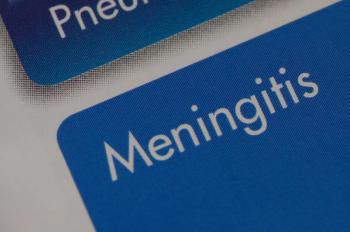
Smart Insulin Pen Cap System Shows Sustained Glycemic Improvement Over 12 Months | ADA 2025
Patients who used the Bigfoot Unity Diabetes Management System had glycemic control and reduced diabetes distress.
A smart insulin pen cap system that integrates with continuous glucose monitors (CGM) to provide alerts in real time showed sustained glycemic improvement and reduced diabetes distress through 12 months, according to data presented at the American Diabetes Association’s 85th Scientific Sessions, which were held June 20-23 in Chicago, Illinois.1
The system, called the Bigfoot Unity Diabetes Management System, integrates with the FreeStyle Libre 2 sensor and supports commonly used insulin pens to simplify diabetes care. It assists users with mealtime and correction doses, helps prevent rapid-acting insulin stacking, and aligns dosing with clinician guidance. Through a mobile app, it provides real-time data on glucose levels, insulin timing, and alerts for missed long-acting doses, improving safety, adherence, and overall diabetes management.
“Diabetes is a growing public health concern,” the authors wrote in a previously published 6 month analysis.2 “For people with insulin-requiring diabetes, dosing instructions may be complex and confusing. While recent guidelines call for CGM use for all who require insulin, regardless of diabetes type, there is also evidence that patients may not know how to interpret what to do with the CGM data.”
A team of investigators from the Jaeb Center for Health Research conducted an analysis of the BURST study (
During the study, patients completed electronic questionnaires at baseline, 3 months, and 6 months. Demographics, medical history, and medication data were collected at baseline. Diabetes type was classified based on the prescribing provider’s order for the Bigfoot Unity system. Every 2 weeks through 12 months, patients self-reported safety events including hypoglycemia, diabetic ketoacidosis and hospitalizations.
The study found that the mean HbA1c decreased from 9.2±1.8% at baseline to 8.0±1.2% at 12 months, representing a mean change of -1.3%. Scores from the Diabetes Distress Scale decreased by a mean -of 0.8 and Hypoglycemic Confidence Scale scores increased by a mean of 0.5. Additionally, 6 severe hypoglycemia events were recorded in 4 patients.
“As injection therapy is used by more than 80% of people with insulin-requiring diabetes, there is a clear need for intuitive, integrated systems to help multiple daily injection patients interpret CGM data into actionable management steps to reduce the burden of demanding self-care directives and support telemedicine,” the authors wrote in the previous analysis.
Don’t get left behind: Sign up today for our
References
1. Tillman J, Beck RW, Polonsky WH, et al. Observed Glycemic and Psychosocial Benefits in the Prospective Bigfoot Unity Real-World Study (BURST)—A Twelve-Month Analysis. Presented at ADA 85th Scientific Sessions; June 20-23; Chicago, IL. Poster 1000-P.
2. Tillman JB, Beck RW, Polonsky WH, et al. Observed Glycemic and Psychosocial Benefits in the Prospective Bigfoot Unity Real World Study: A Six-Month Analysis. J Clin Endocrinol Metab. 2024 Nov 15:dgae778. doi: 10.1210/clinem/dgae778. Epub ahead of print. PMID: 39546625.
Newsletter
Pharmacy practice is always changing. Stay ahead of the curve with the Drug Topics newsletter and get the latest drug information, industry trends, and patient care tips.






































































































































